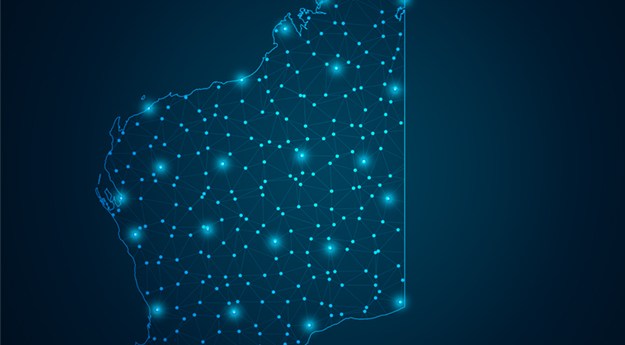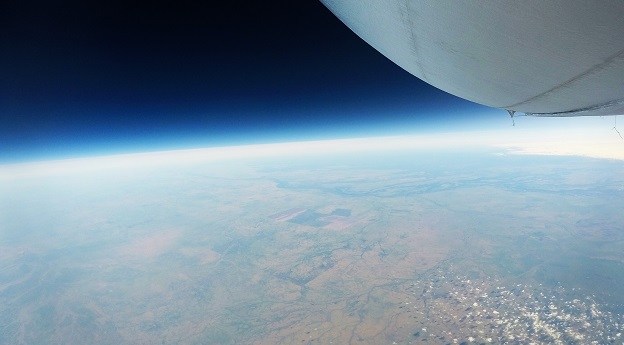
The Construction Innovation 2017 Forum brings together thought leaders and practitioners from across the world to provide insight into how leading firms are utilising technological advancements to deliver innovative best practice solutions in the building and construction industry.
We are particularly excited by our international keynote speakers who will provide a global context for how innovative technologies and practices are helping industry to achieve significant improvements in efficiency and productivity.
Complementing these presentations will include Australian practitioners providing attendees with case study demonstrations and ideas about how forward thinking firms can integrate building information modelling into their everyday practices with demonstrable improvements in cost, timeliness, risk management, productivity and on-site coordination.
Workshops
The 2017 forum will also feature workshops on each day, allowing delegates to choose between practical content that best suits their own job role, experience and educational needs.
Networking and Exhibition
The forum exhibition hall will once again showcase a tailored selection of industry leading exhibitors, and will provide excellent networking, including opportunities to speak with exhibitors, presenters and workshop facilitators. At the conclusion of both days we invite all delegates to join us for networking drinks to be held in the exhibition foyer.
About BIM-MEPAUS
BIM-MEPAUS is a global leading national industry initiative that develops best practice virtual design to physical construction BIM MEP standards, for the Australian construction and building services industry. This is achieved through:
- A structured and consistent approach to modelling practices and data management
- Reliable and accurate Design to Commission As-Built and Design to Fabrication workflows
- Industry standardization delivering improved supply chain integration and efficiency

The Tasmanian Surveying and Spatial Conference for 2017 is being held at C3 Convention Centre, and will run for a full day on Friday the 15th of September. The TSSC is followed by the Tasmanian Spatial Excellence Awards dinner, which is being held at Cascade Brewery.
The conference theme is ‘Locating the Future’ and will include keynote and plenary presentations from across Australia, as well as a selection of presentations from around the state. An interactive forum will close the day with an opportunity for participation from the audience.

The ISPRS Geospatial Week 2017 (ISPRS GSW 2017) will be held in Wuhan, China, from September 18th – 22nd, 2017. This third ISPRS Geospatial Week will be organised by Wuhan University and will be the most important ISPRS event in the year 2017.
The ISPRS GSW 2017 will be focused on the recent research developments and future trends related to geospatial information acquisition, extraction from point clouds, optical/SAR imagery, and ubiquitous sensors, Smart City and global changes, geospatial information mining, quality control and Geo-Big data processing, indoor 3D mapping and navigation, and UAV/UAS innovation applications. With a five-day colorful scientific program, people from geospatial academia and industry will be able to share research ideas, present latest research achievements, and discuss possible collaborations. It will be a very good opportunity for you to meet with top scientists, experts, researchers, and users in the field of Photogrammetry, Remote Sensing, and Spatial Information Sciences.
A number of awards and competitions will also be organized during this ISPRS GSW 2017, including awards for best papers, and best posters, as well as benchmark competitions. Several technical/industrial exhibitions will be organized, which will present to you the advances of new geospatial technologies and solutions (e.g., Smart Cities, UAV/UAS). In addition, you will enjoy the splendid Chinese culture blended with modern technology through social events during the GSW 2017.

The world – including Australia – is on the threshold of a new era of innovation and change with the rise of the Industrial Internet. It is taking place through the convergence of the global industrial system with the power of advanced computing, analytics, low-cost sensing and new levels of connectivity permitted by the Internet. The deeper meshing of the digital world with the world of machines and with people holds the potential to bring about profound transformation to global industry. We are living in the fourth Industrial Revolution.
The Industrial Internet of Things Summit will bring together some of the most exciting and innovative case studies – locally and internationally – with keynote presentations and panel discussions from leading Industrial Internet stakeholders. They will address the most significant challenges the Industrial Internet of Things is facing today and what is needed in terms of knowledge, technology, innovation, investment, collaboration and strategy to fully benefit from its potential.

The global economy and security of many nations depends on assured and secure access to satellites that provide communications, timing and navigation services and remote sensing data. Space probes are also vital to our understanding of the solar system and the far universe. The IAC2017 program addresses all of these topics and emphasises the important contribution that space makes to STEM education as well.
Space is a fragile environment and satellites are easily damaged by space junk. Researchers and companies are working to reduce collision risks to acceptable levels to ensure that all of humanity can benefit from access to space and to space-based services.
Australia hosts ground-based sensors and is investing in research to enable the space environment to be more carefully monitored and regulated. The global space industry is being transformed by:
- the miniaturisation of electronics
- lighter and tougher materials, and
- advanced manufacturing processes.
These innovative technologies will be showcased at IAC2017.

The transport industry is transforming at a rapid rate. New technologies, ideas and partnerships are driving change. The 5th Australian Intelligent Transport Systems Summit is when the ITS industry comes together for two days of pushing the boundaries.
Join hosts, ITS Australia and industry leaders review challenges and opportunities, with program themes focusing on Connected and Automated Vehicles, Mobility as a Service (MaaS) and Transport for Smart Cities. Respected international and Australian thought-leaders from aligned sectors will bring a new dimension, expanding the discussion and providing wider perspectives. With networking, social functions and technical tours, the Australian Intelligent Transport Systems Summit is a must for government, business, academia and start-ups.
Following on from the success of the 23rd ITS World Congress held in Melbourne in October 2016, the 5th Australian Intelligent Transport Systems Summit 2017 will look to continue the conversation and explore technology trends. The growing international focus on connected autonomy and smart cities and where advanced transport is a key driver for the provision of intelligent infrastructure across the transport network.
Hosted by ITS Australia, the Australian ITS Summit is a must attend event for every ITS professional – whether you are doing business in Australasia, looking to export your expertise, or wanting to connect and grow your network base, this will be an opportunity for policy makers, practitioners, researchers and ITS providers to share information addressing modern transport issues.

The geographical map is one of the major advancements that man has developed over thousands of years. We have come a long way from Ptolemy’s maps to have our modern-day, precise, digital maps. Over time, scientists have created and developed many ways of obtaining spatial information.
More than 150 years have passed since the day French inventor Gaspard-Félix Tournachon took a photograph of Paris from an air balloon. This photograph started the phenomenon of remote sensing, which rapidly developed in the twentieth century and has continued to evolve in the twenty-first century.
The appearance of the Earth’s satellite imagery, new technologies of aerial survey, laser scanning, and the use of digital methods of data collecting and processing in real time have significantly changed our attitude to spatial information.
These advancements, in turn, have led us to understand the necessity of development and to bring the annual conference, “From imagery to map: digital photogrammetric technologies,” to a new level.
This year, the name of the annual conference was changed to “FROM IMAGERY TO DIGITAL REALITY: ERS & Photogrammetry” in order to reflect current trends in visualisation and use of spatial information.
Digital reality is measured spatial information that is used in almost all directions of society’s technological developments, be it land management, navigation, autonomous transport systems, smart cities, robotic technologies, and much more. Digital reality provides cartographic basis for the Internet of Things, and it allows building space-time models for sustainable development of society.
This new conference name significantly widens the theme of the conference. The organisers, Racurs Co. and The Israeli Society for Photogrammetry and Remote Sensing, believe the event will contribute to the growth of interest in Earth remote sensing and photogrammetry technologies, attracting new participants to the conference.

IPWEA (NSW) has announced the inaugural Empowering Women in STEM Congress, to be held on 18-19 October at the Australian National Maritime Museum.
This Congress aim is to establish and promote the outstanding contribution women make to the engineering, scientific and technological communities that improve and evolve our society. This event not only creates opportunities and pathways to inspire Australia’s future leaders but will allow you to have your say and influence future policy through our call to action communique.
Come along, voice your contribution and influence future policy regarding gender diversity and skills gap in STEM fields.

The Mapping Sciences Institute of Australia (NSW Division) will be hosting its Annual MSIA Seminar at the Aspire Hotel 383/389 Bulwarra Road, Ultimo. This year represents its 65th year promoting mapping. The seminar will be held during the day on Thursday 19th October, 2017. Eight excellent speakers have been arranged covering a wide range of spatial related topics.
Some of the presenters that have already agreed to present will be Selin Ozdemir, from Esri Australia speaking on “A smarter platform for smarter decisions.” In addition, Nicole Mahoney, NSW Bureau of Crime Statistics and Research speaking on “Utilising GIS to report on trends in crime and monitor the effectiveness of the lockout laws on crime.” Peter Stanković from the Transport Management Centre will speak on “GIS Utilisation within NSW Major Events.” This presentation will cover GIS utilisation within the TMC Major Events team during event (eg City to Surf) planning and execution.
Trisha Moriarty, Manager Geoscience Data Management & Delivery, Geological Survey NSW will present on “Next generation data delivery for NSW’s Geoscientific Data” describing the vast range of geoscientific data available in the Geological Surveys data repositories. Christian Wolf is project scientist for the SkyMapper Southern Survey will present on “Mapping the Sky – from ancient times to the modern Australian SkyMapper Telescope.” He will present on the Australian SkyMapper project, which currently creates the most detailed map of the Southern sky.
Brenton Ray, Spatial Services, DFSI will present on “Environmental Spatial Programs & SME update and Smart State NSW” and will cover Environmental Spatial Programs update of imagery and elevation capture programs.
Emeritus Professor Robert Clancy AM, FRS(N) will present “Cartography: its Contribution to Australian Colonial Science.” Clancy has written five books on mapping of Australia and Antarctica and the collecting of maps, many articles and regularly gives talks on Antique Maps and related topics, curates exhibitions, and promotes interest in Historic Cartography and the Collection of Maps in many formats.
Professor Dietmar Müller will speak on “Using big data analytics to reveal what controls seabed geology”. One of the fundamental aims of the EarthByte Group is geodata synthesis through space and time, assimilating the wealth of disparate geological and geophysical data into a four-dimensional Earth model, connecting solid Earth to surface processes.
For a copy of the seminar brochure please email your request or to confirm your attendance to
Hank Staal by email to msia-nsw@bigpond.com or Staal1@bigpond.com.
Enquiries can be made on 9872 1405 (H) or 0427008545

This workshop is dedicated to professionals using photogrammetry, orthomosaics, 3D modelling and UAVs in their practice. During this in-person training, you will learn how to create accurate maps and models, as well as improve your results. Kickstart your workflow by learning about Pix4D’s recommended best practices when capturing and processing your imagery.






